- Home
- James A. Michener
The Source Page 2
The Source Read online
Page 2
He put aside the maps and jumped from the jeep. With long strides he climbed the steep glacis and finally swung onto the plateau, some two hundred yards long by one hundred and thirty wide. Somewhere in this mound he would start his men digging, and to a disagreeable extent the success or failure of the first years would depend upon how cannily he had chosen; for archaeologists had been known to select their spots without luck and to dig through fruitless levels, while others coming later to the same tell, but with superior insight, had quickly found rewarding layers, one after another. He hoped that he would be one of the lucky ones.
“Deciding where to start?” Tabari asked as he reached the plateau.
The Irishman waited for Dr. Bar-El, then said, “I’m like Sir Flinders Petrie. He organized his digs on the principle that if you command one hundred different communities to build towns on one hundred different mounds, more than ninety will place their major buildings in the northwest area. Why, nobody knows. Possibly because of the sunsets. So naturally I’m inclined toward the northwest, and we can dump our rubble over here.” He pointed to the northern edge of the plateau from which the archaeologists could look down into something not visible from the road: a precipitous gully, called throughout the east a wadi, whose clifflike sides had always protected Makor from armies seeking to establish a siege from the north. The wadi was deep enough to absorb rubble from the entire tell, should any millionaire have enough money to pay for such a total excavation.
The dig at Makor, as planned by Cullinane, would require ten years at a cost of $50,000 a year, and since he had in hand funds only for the first five years, it was essential that he quickly uncover areas of interest; for he had found that people who finance archaeological digs can be depended upon for additional funds if their interest is sustained through the first year, whereas they quickly close their checkbooks if no finds are forthcoming. It was therefore crucial that he locate his trial trenches in the right spots, for even after he had spent ten years uncovering selected levels his team would still have excavated less than fifteen per cent of the site. As he had explained to his board in Chicago, “Our educated guess is that in this tell we may have the remains of about twenty different layers of civilizations. You must understand that for me to peel these off, one by one in proper scientific style until nothing is left but the original perimeter, would require about fifty years. What we’ll do is sink two short exploratory trenches down through all the layers. That’ll take a year, but when we’re through we’ll know in general what’s at hand. Then, in subsequent years, if we get the funds, we’ll go back and dig more deeply in selected areas that promise returns. But bear with me if I repeat that we cannot possibly uncover the entire tell. What we can uncover is a picture of what happened there, and it’s that we’re after.”
“Isn’t it pretty important where you locate those first trenches?” a member had asked.
“That’s what I’ll sweat about for the next six months,” he had replied, and now the moment was at hand when he must make the critical decision.
As he stood that morning on top of the tell whose secrets he must probe, he was no ordinary man, come to the Holy Land with enthusiasm and a shovel; he had won the title archaeologist only at the end of a long period of subtle training. At Harvard he had learned to read Aramaic, Arabic and ancient Hebrew scripts. During graduate work with Professor Albright at Johns Hopkins he had mastered Mesopotamian cuneiform and Egyptian hieroglyphs until he could read them as an average man reads a newspaper. He had taken off a year to attend Carnegie Tech for advanced work in metallurgy, so that he would be able to identify with some certainty the provenience and smelting processes of local metals and their alloys. Later he had spent three winter terms at Ohio State University, taking advanced ceramics, precisely as if he intended making cups and saucers for the rest of his life, and from this experience had trained himself to guess within a hundred degrees centigrade the furnace heat at which any given piece of ancient pottery had been fired; he knew less of the historical relationships of ceramics than a real specialist like Dr. Bar-El, but in technical analysis he excelled her. Following these scientific courses he had lived for a year in New York, studying costume and armor at the Metropolitan Museum, and for another year—one of the best of his life—in the little French university town of Grenoble, specializing in prehistory and the cave art of France. Coincident with his work among the Indians of Arizona he had attended summer sessions at the state university, working on problems of dendrochronology, whereby time sequences in desert areas could be established by comparing the wide rings left in wood by growing seasons which had enjoyed heavy rainfall and the narrow ones left by years of drought. This was followed by a full year at Princeton, enrolled in the Presbyterian Seminary, where he worked with experts on problems of Bible research; but as often happens, one of his most valuable skills he had picked up by himself. As a boy he had found pleasure in collecting stamps; perhaps he was now an archaeologist because of this accident of his childhood, but his Irish father used to growl, “What are you doin’ with them stamps?” He did not know, but when he became a man he vaguely sensed that he ought not to be fooling around with bits of paper and in some fortunate way he shifted to coins, which seemed more respectable, and this field of specialization was to prove of great value in Biblical research. He had written one of the papers which had helped prove that there had been two issues of Jewish shekels: one used in the initial Jewish revolt led by Judah the Maccabee, 166 years before Christ; and a second minted during the final revolt of Bar Kochba, 135 years after Christ. As a result of this paper he was known as a numismatic expert. All these skills, plus others like ancient architecture and the conduct of war in Biblical times, which he had acquired pragmatically during his various digs, he was now ready to apply to Tell Makor, but the location of his two trenches was so important that he intuitively postponed the decision. When the others left the tell, he remained alone, walking aimlessly across the mound, kicking idly at the topsoil to determine its construction.
A plateau only two hundred yards by a hundred and thirty wide doesn’t sound like much, he mused. Two ordinary football fields. But when you stand looking at it with a teaspoon in your hand and somebody says, “Dig!” the damned thing looks immense. He prayed to himself: So much depends on this. God help me to pick the right spot; but his attention was diverted from this problem when he noticed protruding from the earth a small object which did not look like a pebble. Bending over to inspect it, he found a small piece of lead, slightly flattened on one side. It was a spent bullet and he started to throw it away, but reconsidered.
“Voilà! Our first find on Tell Makor,” he said to himself. Spitting on his fingers, he cleaned the bullet until it lay dully, heavy in his hand. Holding it between thumb and forefinger, he asked himself, “Level? Age? Provenience?” thus using the bullet as an excuse for postponing his decision on the trenches. Taking from his briefcase an excavation card, he sat on the edge of the mound and filled it in with that exquisite, almost feminine, care he had always used in such work. The bullet had probably been fired from a British rifle, since they were the most common in these parts. Any recent date would be acceptable, but around 1950 A.D. was logical, since the bullet showed signs of aging, and he wrote that down; but he had no sooner done so than he erased the A.D. in some embarrassment and substituted C.E. He was working in a Jewish country which had formerly been a Muslim country, and here the use of Anno Domini was frowned upon; yet the world-wide system of dating had to be respected, and that required a Before Christ and an After Christ whether Muslims and Jews liked it or not, just as all longitude was measured from an English observatory near London, whether Anglophobes liked that or not. So Cullinane wrote his date 1950 C.E., which had originally signified Christian Era but which was now universally read as Common Era. Dates before Jesus were written B.C.E., Before the Common Era, and this satisfied everyone.
With precise pen marks he sketched the bullet and indicated its scale, 2:1, which
meant that the drawing was two times as large as the original. Had the reverse been true he would have labeled it 1:2. Reviewing his playful entry, his Item One of the excavation, he was pleased to find his pen still accurate and added a neat J.C.
As Cullinane finished the final dot, he looked up to see that the most important member of his staff had arrived from Jerusalem and had climbed the tell to greet his colleagues. He was a tall, slender Jew, two years older than Cullinane, with deep-set eyes peering from beneath dark eyebrows. He had sunken cheeks but full lips that were eager to smile. His dark hair came well down onto his forehead and he moved with the grace of a man who had been both a soldier and a scholar. At present he worked in one of the government ministries in Jerusalem and was pleased with the invitation that would keep him at Makor from mid-May through mid-October, for he was a trained archaeologist whose political skills had been found so valuable to the government that he was rarely allowed out in the field. His position at Makor was ambiguous. Ostensibly he was to serve as chief administrator of the project, determining salaries, working hours and living arrangements. If he were not efficient, the complex personalities involved in the dig could waste their time in petty squabbles, if not outright feuds. He was hired to be the dictator, but no one at Makor would recognize this fact, for Ilan Eliav was a master administrator, a man who rarely lost his temper. He was probably the best-educated scholar in the expedition, speaking numerous languages, but his greatest asset was that he smoked a pipe, which he had a habit of rubbing in the palms of his hands until the complainant before him reached some kind of sensible decision without depending upon the intervention of Eliav. Workmen at previous digs had said, “I’m going in to see if the pipe will approve a raise.” And the kindly Jew with the deep-set eyes would listen as if his heart were breaking, and the bowl of his pipe would revolve slowly in his palms until the workman realized for himself how preposterous a raise would be at that time.
Actually Dr. Eliav was the official watchdog of the dig; the tells of Israel were far too valuable to allow just anyone to come in with a team of amateurs to butcher them. The nation contained more than a hundred unexcavated sites like Makor, and during the next two or three centuries teams from universities in Peking and Tokyo, or from learned societies in Calcutta or Cairo, would accumulate the necessary funds to dig out these long-forgotten cities, and it would be a disservice to humanity present and future if the sites were now abused. The problem was especially acute when archaeologists like Dr. Cullinane proposed to excavate by the trench method, for many crimes against history had been perpetrated in Israel by enthusiastic men with shovels who dug hasty trenches through improperly recorded levels. Normally the Israeli government would have rejected a trench proposal like Cullinane’s, but the Irish scholar had established such a good reputation, and he was known to be so well trained in archaeological matters, that in his case permission was granted; nevertheless, Dr. Eliav had been detached from his important desk job to be sure that the valuable tell was not mutilated.
He now strode across the top of the mound, extended a long arm to a man he instinctively liked, and offered an apology: “I am most sorry not to have been here when you arrived.”
“We’re fortunate to have you on any terms,” Cullinane said, for he knew why a scholar as important as Eliav had been released to work with him. If he had to accept a watchdog, he was pleased that it was to be Eliav; it was much easier to explain problems to a man who knew more than you did.
“I tried to break away last week,” Eliav explained. “I had three good days up here getting things organized, but they called me back. I want you to see the camp.” He led Cullinane to the western end of the plateau, where an ancient footpath led zigzag down the glacis toward an old rectangular stone building whose southern face was composed of three graceful Arab arches forming an arcade which led to four cool white rooms. The largest would be Cullinane’s office and the library; the others would house photography, ceramics and drafting.
“This looks better than I expected,” Cullinane said. “What was the building originally?”
Eliav pointed with his pipe stem to Tabari, who volunteered, “Probably the home of some Arab olive grower. Two or three hundred years ago.” Cullinane was impressed with the easy manner in which Tabari and Eliav worked together, showing none of the area’s traditional antagonism between Arab and Jew. They had co-operated on several previous digs and each respected the competence of the other.
“Out here are the sleeping tents, four of them,” Eliav continued, “and along this path lies Kibbutz Makor, where we’ll take our meals.” As he led the way to the communal agricultural settlement, Cullinane noticed the bronzed young men and women engaged in the work of the kibbutz. They were unusually attractive, and Cullinane thought: It took only a few years to change the hunched-up Jew of the ghetto into a lively farmer. Looking at the muscular young people, especially the free-moving women, he could not detect that they were Jews. There were blonds with blue eyes, and these looked like Swedes; there were blonds with square heads shorn flat, and these looked like Germans; there were redheads who looked like Americans; studious types who looked like Englishmen; and others who were sunburned to a near-black and who looked like Arabs. An average man, put amongst the lithe young people of Kibbutz Makor, would have been able to isolate only about ten per cent who looked like his preconception of a Jew, and one of them would have been Jemail Tabari, the Arab.
“We’ve reached three major decisions about the kibbutz,” Eliav explained as the group approached a large dining hall. “We won’t sleep here. We will eat here. And up till harvesting begins we’ll be allowed to employ the kibbutzniks on the dig.”
“Is that good or bad?” Cullinane asked.
“Rest easy,” Eliav said. “We brought this tell to your attention only because the kibbutzniks kept pestering us with samples. ‘See what we dug out of our tell!’ These kids love archaeology the way American kids love baseball.”
The archaeologists were seating themselves in the large mess hall when a lean crew-cut young man of thirty-five, wearing sandals, shorts and T-shirt, approached to introduce himself as “Schwartz … secretary of this kibbutz. Glad to have you eat with us.”
Cullinane launched a formal and somewhat academic reply, beginning, “We want you to know how much we appreciate …” but Schwartz cut him off.
“We appreciate your dollars,” he said, leaving abruptly to signal a girl who was serving coffee.
“Genial fellow,” Cullinane mumbled as Schwartz deserted him.
“In him you see the new Jew,” Eliav half-apologized. “He’s what makes Israel strong.”
“Where’s he from? He spoke like an American.”
“No one knows, really. He’s probably called Schwartz because he’s dark. He survived, God knows how, both Dachau and Auschwitz. He has no family, no history, only raw drive. Look at his arm when he comes back.”
A good-looking, husky girl in tight shorts strode to the table, dealt out some cups and saucers and began pouring coffee as if she were a laborer pouring cement. Slamming the pot down, in case anyone wanted seconds, she went off to fetch some sugar, but Schwartz had anticipated her and slapped down a sugar bowl before Cullinane.
“Americans want everything sweet,” he said, but Cullinane ignored the remark, for he was staring at Schwartz’s left arm where in blue indelible ink was tattooed a concentration-camp number: S-13741.
“Birthmark,” Schwartz said.
“You speak like an American.”
“After the war I tried living in Boston. But I came here to join the fighting.”
“Did you get your name in Boston?” Cullinane asked.
Schwartz stopped. “How’d you guess that? They were the family I lived with. Nice people but they didn’t know from nothin’. I wanted to be where the war was.”
The husky girl now returned with a second bowl of sugar, started to slam it onto the table, saw that Schwartz had got there first, and retreated with the
bowl to another table. As she left, Cullinane said, “It’s refreshing to see a girl who doesn’t wear lipstick.”
“She does it for the defense of Israel,” Schwartz said belligerently.
“How’s that?”
“No lipstick. No salon dancing.”
“For the defense of Israel,” Cullinane repeated.
“Yes!” Schwartz half-snarled. “Ask her yourself. Come here, Aviva.”
The stocky girl sauntered back and said contemptuously, “I’m not one of those salonim.”
“Salonim,” Schwartz interpreted. “Those of the salon.”
“I pledged with all my friends. Never dance salon style.” She looked insolently at Cullinane and left with the awkward rhythm of a girl who excels in folk dancing, and Schwartz followed her.
“I hope Aviva’s not on the pottery crew,” Cullinane said quietly.
“Wait a minute!” Dr. Bar-El flashed. “When I was seventeen I took that same pledge. We felt then as Aviva feels now. Israel needed women who were ready to bear arms … to die at the battlefront if necessary. Lipstick and salon dancing were for the effete women of France and America.” Primly, she put down her coffee cup and said, “I’m glad the spirit still exists.”
“But you wear lipstick now,” Cullinane pointed out.
“I’m older,” Mrs. Bar-El said, “and now I fight for Israel on other battlegrounds.”
It was an odd statement, which Cullinane preferred not to explore at the moment. “I think we should get back for the meeting,” he suggested, and the four scholars wound their way along the pleasant path toward the arched stone house serving as their headquarters, but as Cullinane reached the building he happened to look south across the road and noticed for the first time the olive trees of Makor: they were incredibly old. Their existence was not measured in years or decades but in centuries and millennia. Their trunks were gnarled, their branches broken. Many retained no center wood at all, for the years had rotted away their cores, leaving only fragments standing, but these were sufficient to provide the twisted arms of the tree with life, and in the late spring the olives were covered with those gray-green leaves that made the trees so attractive. Each wind that came down the ancient road rustled these leaves, turning the aspect of the grove from green to gray to some intermediate, shimmering color. Cullinane had seen olives before, but never a grove like this, and as he was about to enter the building from which the dig would be directed, he felt himself pulled across the road to inspect one notable tree—a veritable patriarch whose gnarled trunk was merely a shell through which one could see in many directions. The tree bore only a few branches, but these were thick with maturing olives, and as the archaeologist stood inquiringly beside this stubborn relic he was as close to the mystery of Makor as he would ever be, and in the presence of this august tree John Cullinane felt humbled. It was a proper preparation for a dig and he walked in silence to the room where his paid staff and their nineteen helpers had assembled from various parts of the world in response to an advertisement he had run in various British and Continental newspapers: “An archaeological dig is proposed in western Galilee for the summer campaign of 1964 and succeeding years. Qualified experts are welcomed if they can pay their own transportation to Israel. Food, lodging, medical care provided, but no salaries.” More than a hundred and thirty experienced men and women had applied and from the list he had selected the team who now sat before him. They were dedicated scholars, eager to work at their own expense if only they could help probe the secrets that lay buried in the tell, and each was prepared to use his mind and imagination as skillfully as he used his pick and hoe.

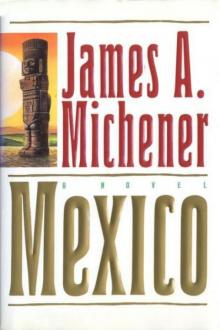 Mexico
Mexico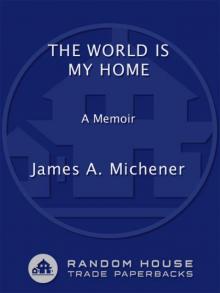 The World Is My Home: A Memoir
The World Is My Home: A Memoir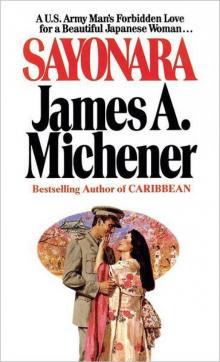 Sayonara
Sayonara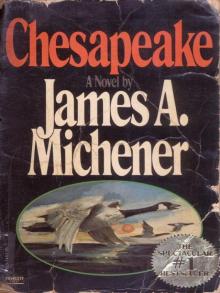 Chesapeake
Chesapeake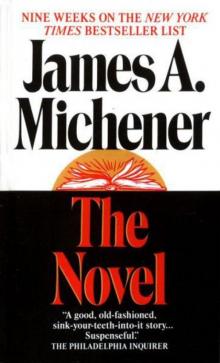 The Novel
The Novel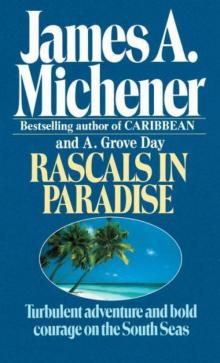 Rascals in Paradise
Rascals in Paradise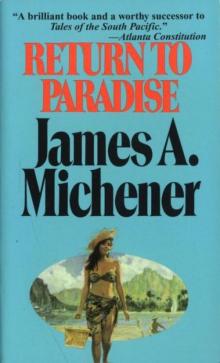 Return to Paradise
Return to Paradise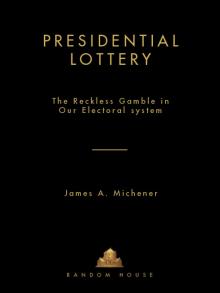 Presidential Lottery: The Reckless Gamble in Our Electoral System
Presidential Lottery: The Reckless Gamble in Our Electoral System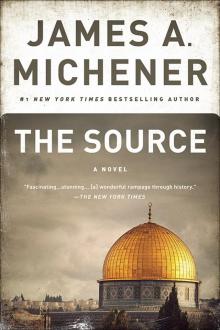 The Source
The Source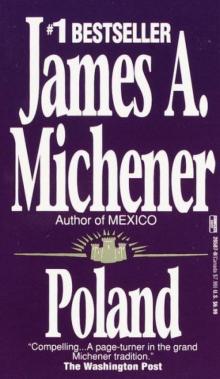 Poland
Poland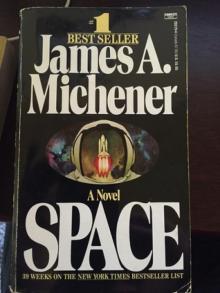 Space
Space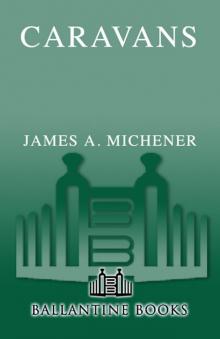 Caravans
Caravans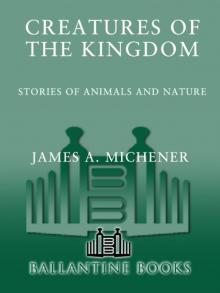 Creatures of the Kingdom: Stories of Animals and Nature
Creatures of the Kingdom: Stories of Animals and Nature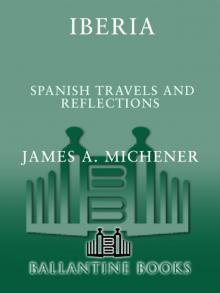 Iberia
Iberia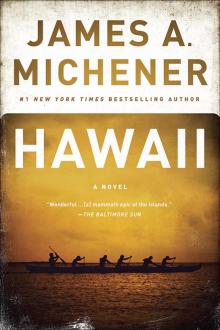 Hawaii
Hawaii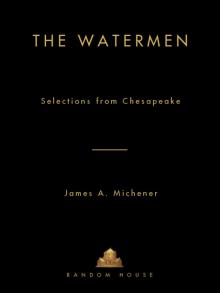 The Watermen: Selections From Chesapeake
The Watermen: Selections From Chesapeake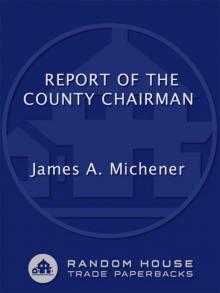 Report of the County Chairman
Report of the County Chairman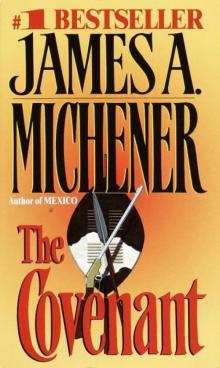 The Covenant
The Covenant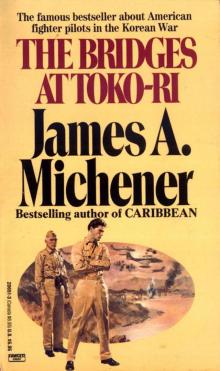 The Bridges at Toko-ri
The Bridges at Toko-ri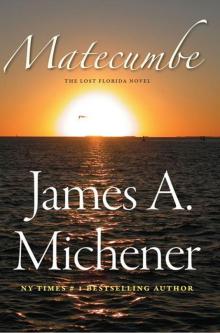 Matecumbe
Matecumbe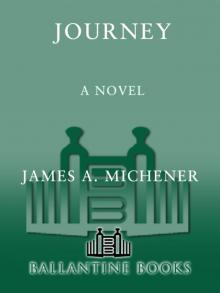 Journey: A Novel
Journey: A Novel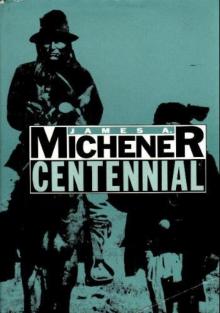 Centennial
Centennial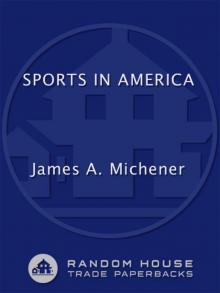 Sports in America
Sports in America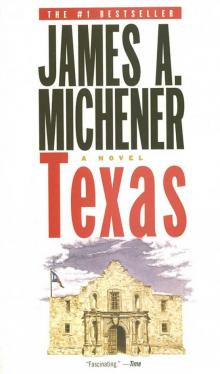 Texas
Texas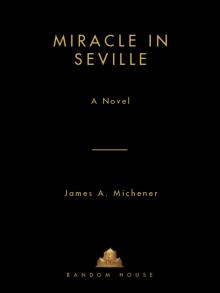 Miracle in Seville
Miracle in Seville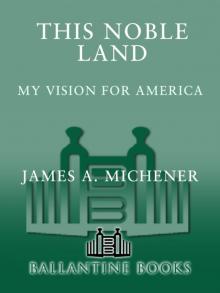 This Noble Land: My Vision for America
This Noble Land: My Vision for America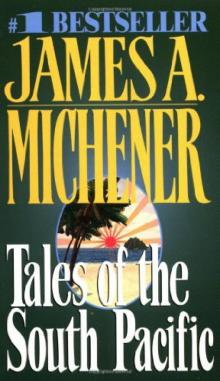 Tales of the South Pacific
Tales of the South Pacific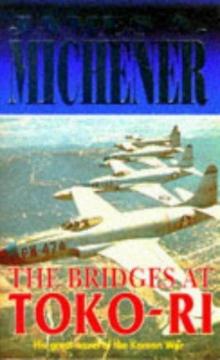 Bridges at Toko-Ri
Bridges at Toko-Ri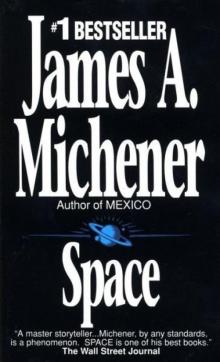 Space: A Novel
Space: A Novel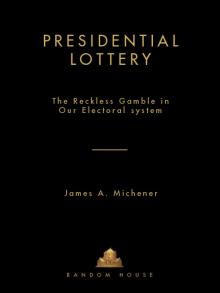 Presidential Lottery
Presidential Lottery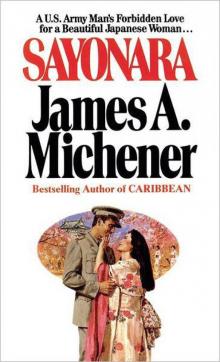 Sayonara: A Novel
Sayonara: A Novel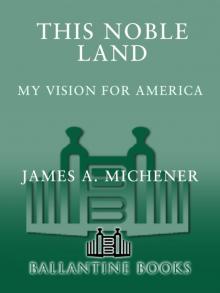 This Noble Land
This Noble Land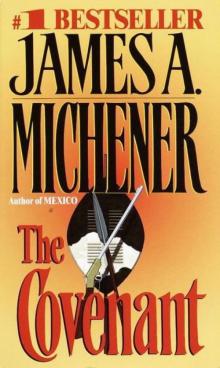 The Covenant: A Novel
The Covenant: A Novel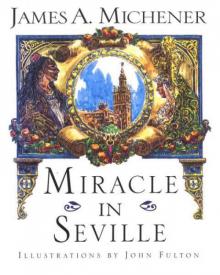 Miracle in Seville: A Novel
Miracle in Seville: A Novel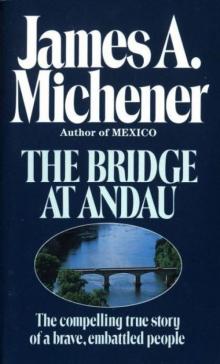 The Bridge at Andau
The Bridge at Andau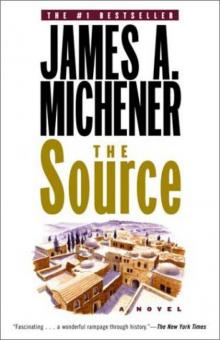 Source
Source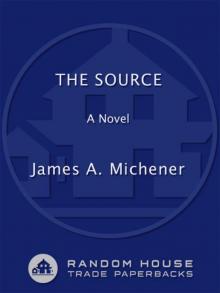 The Source: A Novel
The Source: A Novel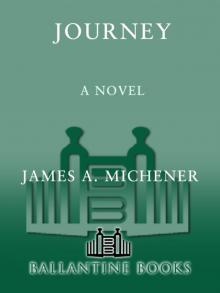 Journey
Journey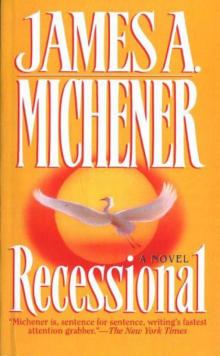 Recessional: A Novel
Recessional: A Novel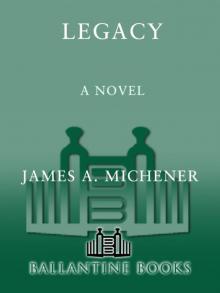 Legacy: A Novel
Legacy: A Novel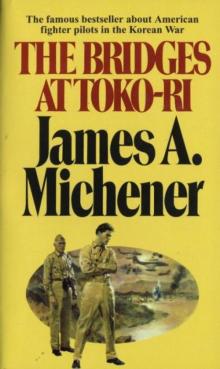 The Bridges at Toko-Ri: A Novel
The Bridges at Toko-Ri: A Novel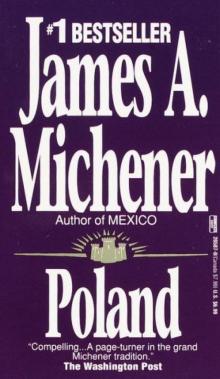 Poland: A Novel
Poland: A Novel